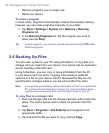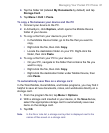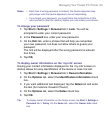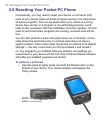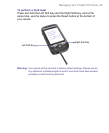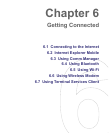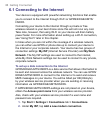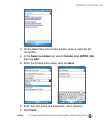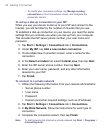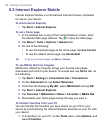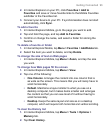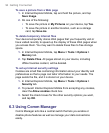88 Getting Connected
6.1 Connecting to the Internet
Your device is equipped with powerful networking functions that enable
you to connect to the Internet through Wi-Fi or GPRS/EDGE/UMTS/
HSDPA.
Connecting your device to the Internet through a private or free
wireless network is your best choice since this will not incur any cost.
Take note, however, that using Wi-Fi on your device will drain battery
power faster. For more information about setting up a Wi-Fi connection,
see “Using Wi-Fi” later in this chapter.
In times when you are not within the coverage of a wireless network,
you can either use GPRS or phone dial-up to connect your device to
the Internet or your corporate network. Your device has two groups of
connection settings: My ISP (Internet Service Provider) and My Work
Network. The My ISP settings are used to connect to the Internet,
while My Work Network settings can be used to connect to any private,
corporate network.
To set up a data connection to the Internet
GPRS/EDGE/UMTS/HSDPA is a data service that allows information to
be sent and received across the wireless network. You can use GPRS/
EDGE/UMTS/HSDPA to connect to the Internet or to send and receive
MMS messages on your device. You will be billed per KB (Kilobyte)
by your wireless service provider when you are sending or receiving
information via GPRS/EDGE/UMTS/HSDPA.
If GPRS/EDGE/UMTS/HSDPA settings are not preset on your device,
obtain the Access point name from your wireless service provider.
Also, check with your wireless service provider if a user name and
password are required.
1. Tap Start > Settings > Connections tab > Connections.
2. Under My ISP, tap Add a new modem connection.



